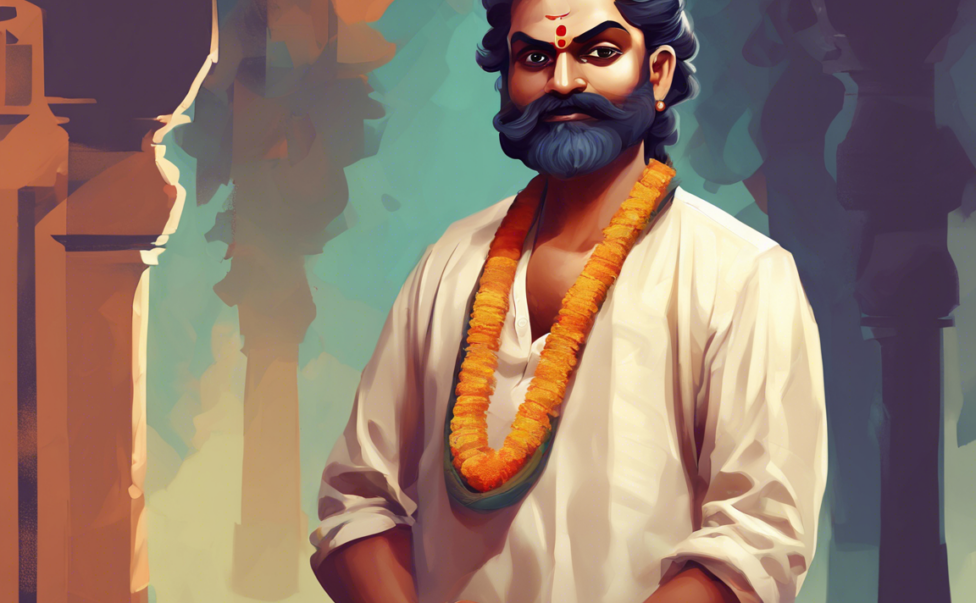The Heroic Story of Alluri Sitarama Raju
In the annals of Indian history, few figures evoke as much reverence and admiration as Alluri Sitarama Raju, the iconic leader of the Rampa Rebellion during the early 20th century. Born on July 4, 1897, in the village of Pandrangi in present-day Andhra Pradesh, Alluri Sitarama Raju emerged as a symbol of resistance against British colonial rule and a champion of indigenous rights.
Early Life and Influences:
Alluri Sitarama Raju was deeply influenced by the tales of valor and courage from India’s past, particularly the stories of the Kakatiya dynasty and the Vijayanagara Empire. His upbringing in a traditional Hindu household instilled in him a sense of duty towards his community and a strong belief in the Swadeshi movement that sought to promote Indian goods and industries.
The Rampa Rebellion:
The spark that ignited Alluri Sitarama Raju’s revolutionary zeal was the Andhra Mahasabha movement, which aimed at social and economic reforms in the region. Raju, deeply moved by the plight of the tribal communities in the Agency areas of the Madras Presidency, decided to take up their cause and lead them in a violent uprising against the British authorities.
In 1922, Alluri Sitarama Raju launched the Rampa Rebellion, also known as the Rampa Revolt, with the aim of liberating tribal lands from the control of the British government and local zamindars. His guerilla tactics and charismatic leadership soon made him a thorn in the side of the colonial administration, as he led daring raids on police stations and government offices.
Legacy and Impact:
Although the Rampa Rebellion was ultimately quelled by the British forces in 1924, the legacy of Alluri Sitarama Raju continues to inspire generations of Indians. His fearless commitment to the cause of indigenous rights and his willingness to sacrifice his life for the freedom of his people have earned him a hallowed place in the pantheon of Indian freedom fighters.
Commemoration and Recognition:
In independent India, Alluri Sitarama Raju has been commemorated through statues, memorials, and cultural references that honor his memory and legacy. His life and struggle serve as a reminder of the unyielding spirit of the Indian people in the face of oppression and injustice.
FAQs about Alluri Sitarama Raju:
- What was the main goal of Alluri Sitarama Raju’s Rampa Rebellion?
-
Alluri Sitarama Raju aimed to liberate tribal lands from British and zamindar control, advocating for indigenous rights in the region.
-
How did Alluri Sitarama Raju inspire his followers?
-
Through his charismatic leadership, fearless tactics, and unwavering commitment to the cause, Alluri Sitarama Raju inspired his followers to rise against colonial oppression.
-
What was the outcome of the Rampa Rebellion?
-
The Rampa Rebellion was eventually quelled by British forces in 1924, leading to the capture and subsequent execution of Alluri Sitarama Raju.
-
Why is Alluri Sitarama Raju remembered as a hero?
-
Alluri Sitarama Raju is remembered as a hero for his selfless sacrifice, courageous leadership, and tireless efforts to fight for the rights of the oppressed.
-
How did Alluri Sitarama Raju’s background shape his revolutionary ideals?
- Alluri Sitarama Raju’s upbringing in a traditional Hindu household and exposure to the Swadeshi movement instilled in him a strong sense of duty towards his community and a passion for Indian independence.
In conclusion, the saga of Alluri Sitarama Raju serves as a testament to the indomitable spirit of the Indian people in their quest for freedom and justice. His life and legacy continue to inspire generations to uphold the values of courage, sacrifice, and unwavering commitment to the cause of justice and equality.

